QuestionAbout a week ago I bought two female guinea pigs. They had been living in the same cage and they seemed to get along ok, so I housed them together. Their names are Rogue and Akiko. Well, the problem is that Rogue seems to be very aggressive toward Akiko. Originally I had one food bowl and one house, but every time Akiko would try to use either Rogue would chase her away and sometimes nip at her. So I added another house and food bowl hoping that would help and it did a little but Rogue still bullies Akiko a lot. If they get near each other sometimes they'll be fine but a lot of the time they'll start squealing and then Rogue will nip at Akiko and chase her away. When they are outside of the cage though they seem better and Rogue is much less aggressive. So I'm not sure what to do. I don't want to have to give Rogue back, but then again I don't want Akiko to be miserable because she's constantly being bullied and I can't really afford to get a second cage.
Also, this is unrelated, but I'm concerned that they might both have mites as they keep scratching and biting themselves. But I've checked their skin and it looks normal; no inflammation or scabs and they aren't losing any hair that I can tell. Is their anything else that might be causing this?
Thank you and sorry about this being so long.
Answer
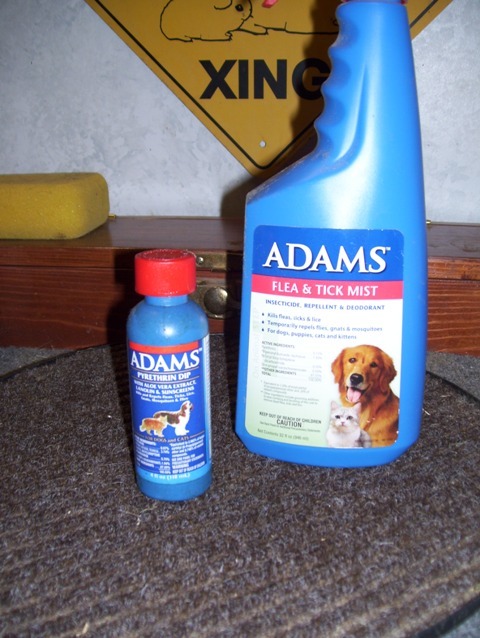 Adams Spray and Dip
Adams Spray and Dip
Please don't apologize for a lengthy question. That's why we're here.
Even though these two sows were previously housed together they're now in a different environment. It's not unusual for one to claim the status of 'boss hog.' As long as there isn't any hair pulling or severe biting just leave them alone and they'll work out the chain of command.
Very often when a sow is in heat they get a little bitchy, just as most of us females do when our hormones are dictating our attitude. I have the same thing in my caviary. It's generally short lived and resolves itself in a few days. So don't be too anxious to take Rogue back.
Mites can also cause behavior issues because they're uncomfortable and irritating. It's rare to see anything by just looking at the coat. If there are lice you might see some very small little thread like pieces that move. Sometimes when you first look at them you're not sure if they're moving because it appears they're falling down as the hair moves, as you would expect with dandruff. But if you watch closely you may see them actually move.
Not a problem and not anything to be embarrassed about or grossed about. Dogs get fleas, cavies get mites. It's just a part of life. I'm going to copy and paste an answer I just did for Tabitha on the same issue. Pardon me for being lazy, but it's rather windy and it's easier to just paste it in here for you. (Forgive the repetition on the description of lice.)
You won't see irritated skin with mites, nor will you see any redness or inflammation. That's something you see with a fungus, but not mites. Typically the first sign of mites is the telltale "V" they've chewed into their coats trying to get them off. The mites tend to gravitate to the top of the back because they know the pigs can't reach the very top. Once treated the hair will grow back again.
The scratching is a sign that she has mites or lice, or both. We don't know where they come from, other than we suspect shavings, hay, etc. but the reality is we honestly don't know. These mites are species specific, as are lice. That means they will not get on humans, dogs, cats or any other species besides guinea pigs.
It's an easy treatment. But first of all check her coat and see if you can find any evidence of lice. They are very tiny and look like teensy little pieces of thread, about half the length (or smaller) than a grain of rice. If you part the hair on top of her back and look down into the coat you may see them moving. They don't move very fast, so you have to look very carefully.
Mites are invisible to the naked eye and many times even having skin scrapings at the vet will come up negative. To assume that your pig can't get them is like thinking you dog or cat can't get fleas. It just happens. Fortunately it's a simple and inexpensive fix.
Sometimes when a pig is carrying mites or lice they don't like to be petted because it stirs them up and makes them itch more. So the biting attempt can also be a sign of infestation.
There's a product at your local pet store called Adams Spray. It comes in a blue spray bottle. You can use that to thoroughly soak your pig with the spray, then let her drip dry. This will work for both mites and lice.
If you see lice you can purchase a dip made for puppies and kittens that contains Pyrethrins or Premethrins. I personally like Adams because it has a nice scent to it. If using a dip mix it according to the manufacturer's instructions. You can use your bathroom sink or I like to use one those Rubbermaid containers that looks like a shoebox.
You want about two or three inches of the mixture in the container. Put the pig in it and use a cup to pour the solution all over her. Make sure you don't get it in her eyes or ears. You want her soaking wet with the dip.
After you dip each pig put her in her cage or on some towels and let her drip dry. Do NOT use a hair dryer. It's important that she dries on her own. After that a quick spray once every six weeks or so will keep any critters at bay.
There is no shame in having an animal that gets these things. The only shame is when it's not treated. Anyone who thinks their pigs will never have mites or lice is kidding themselves.
I've attached a picture for you of the Adams products. As I said I like this product because it has a pleasant scent and is made of environmentally safe products. Pyrethrins and Premethrins are made of food products, not insecticides.


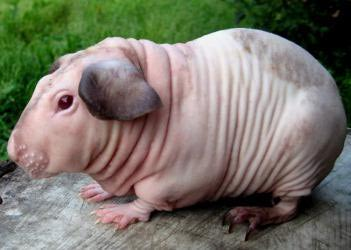 Guinea Pig Genes?
QuestionI have a male Dalmatian guinea pig, and I have
Guinea Pig Genes?
QuestionI have a male Dalmatian guinea pig, and I have
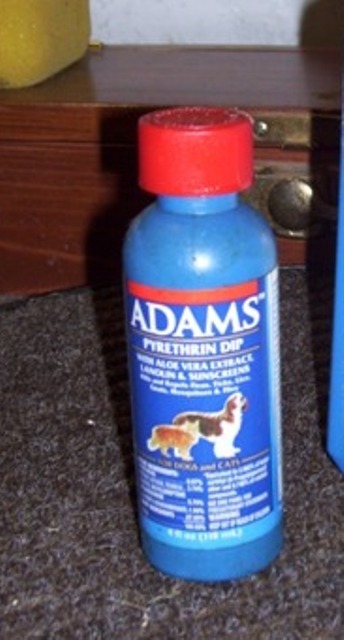 mites on guinea pigs
QuestionQUESTION: I adopted 2 guinea pigs from our anim
mites on guinea pigs
QuestionQUESTION: I adopted 2 guinea pigs from our anim
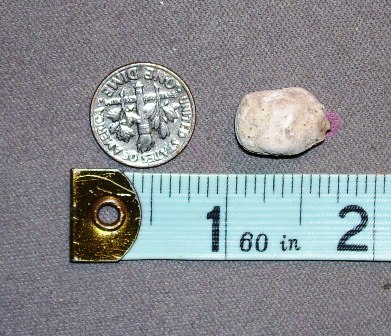 strange behaviour
Questionhi there, i have a 17 month old female guinea p
strange behaviour
Questionhi there, i have a 17 month old female guinea p
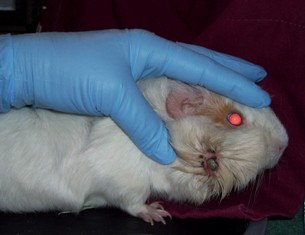 abscess is bleeding
QuestionHi Pat,
My guinea pig, Pogo, got an abscess a f
abscess is bleeding
QuestionHi Pat,
My guinea pig, Pogo, got an abscess a f
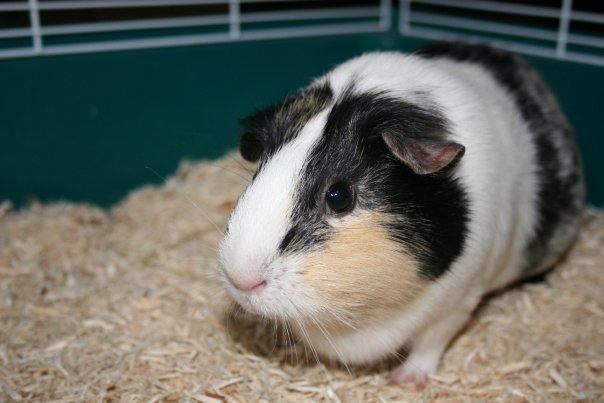 Get another guinea pig?
QuestionMolly
QUESTION: Hi. (Im 18) and I own on
Get another guinea pig?
QuestionMolly
QUESTION: Hi. (Im 18) and I own on